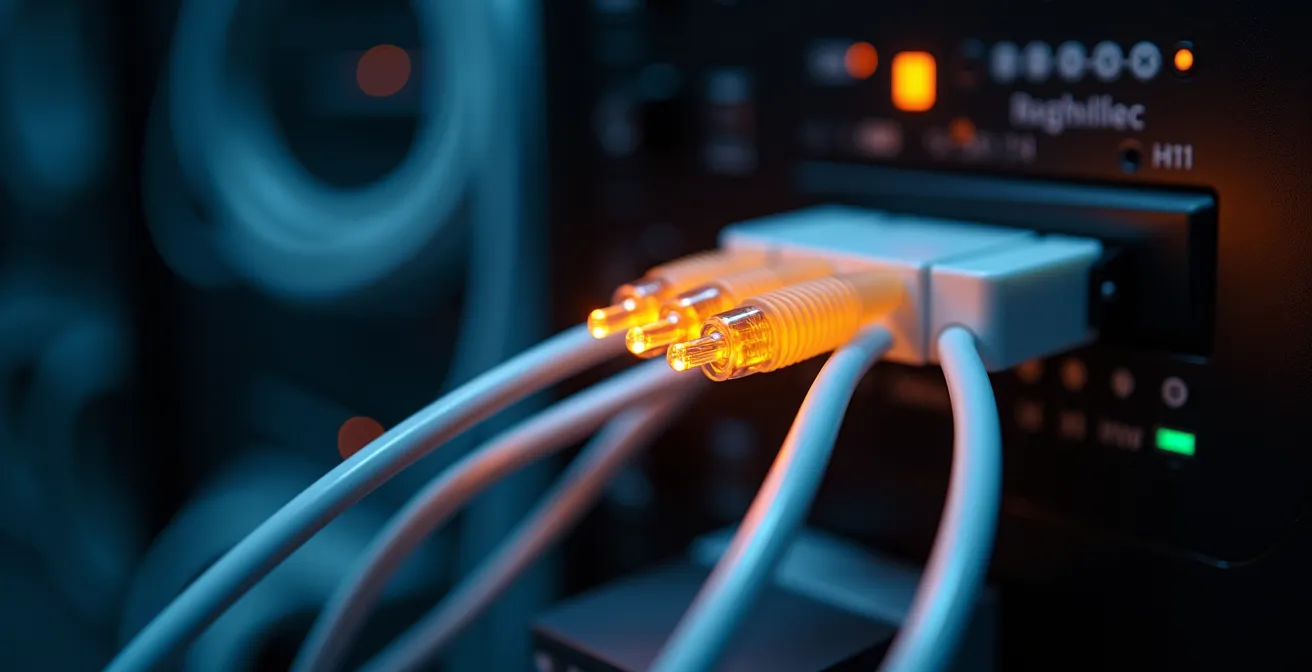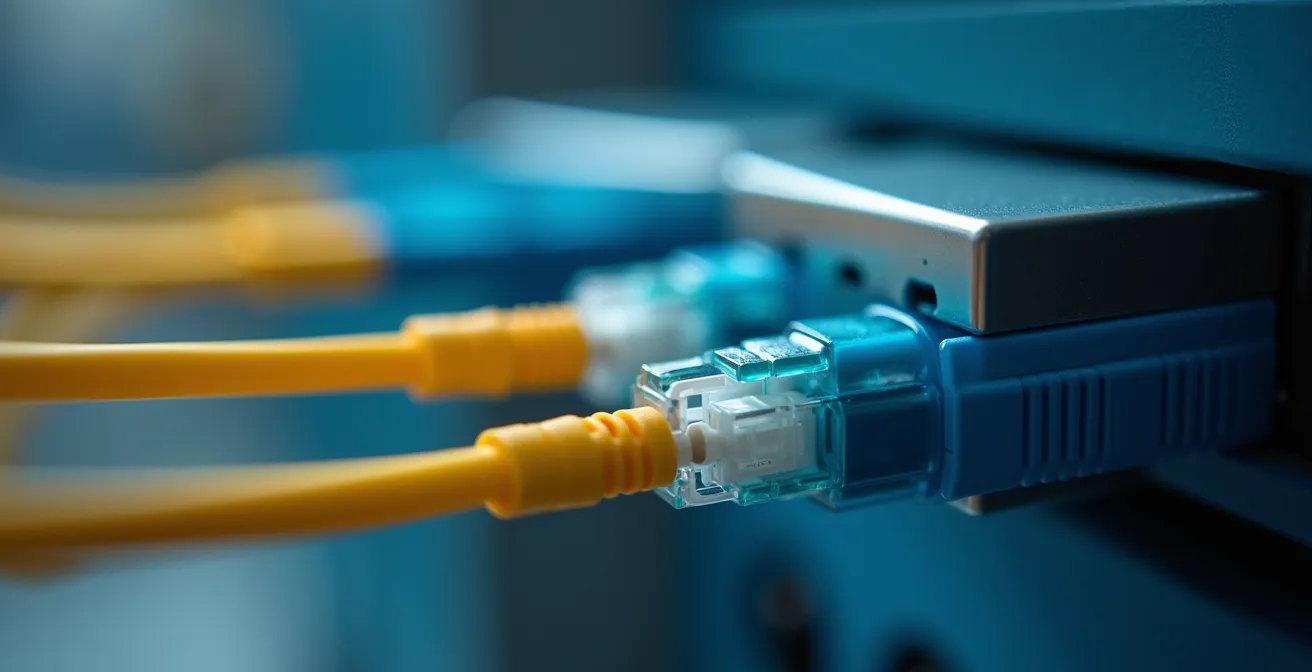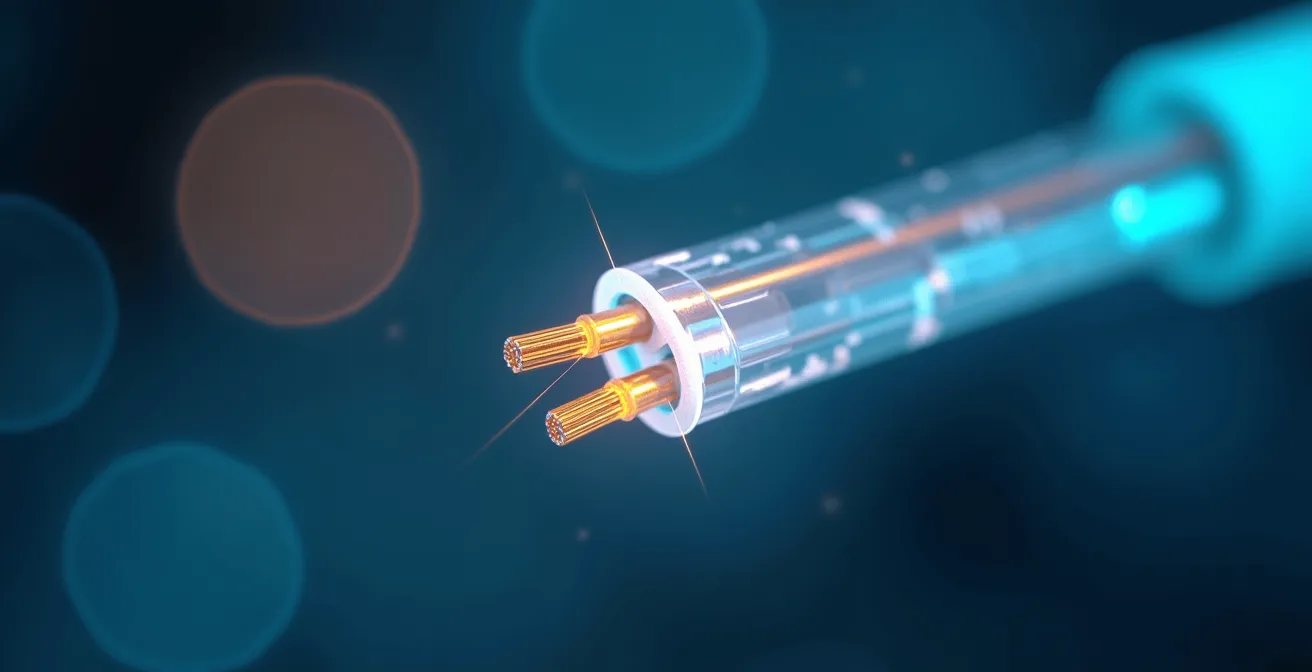
The conversation around fiber optic deployment often centers on consumer benefits like faster streaming and smoother gaming. While these are valid advantages, they barely scratch the surface of a much deeper reality. The rapid, widespread rollout of fiber infrastructure is not merely an upgrade; it is a foundational strategic investment that directly shapes a nation’s economic competitiveness, national security, and technological sovereignty for decades to come.
Viewing fiber through this strategic lens reveals that the speed of its deployment is a critical variable in global competition. As digital dependency intensifies, the robustness and security of the underlying network become paramount. For governments and industries alike, the expertise of specialized telecoms providers is indispensable in navigating this complex and urgent transformation, ensuring that the digital backbone of a modern economy is both resilient and future-proof.
Fiber’s Strategic Imperative in 5 Key Areas
- National Security: Fiber networks form a resilient and secure infrastructure, crucial for protecting against cyber threats and ensuring data sovereignty.
- Economic Competitiveness: High-speed connectivity acts as an economic multiplier, enabling advanced industries and fostering innovation that drives global competitiveness.
- Workforce Challenges: The speed of deployment is hampered by regulatory hurdles and a significant shortage of skilled fiber technicians and engineers.
- Future Technologies: Fiber is the non-negotiable backbone for next-generation innovations like AI, quantum computing, and immersive extended reality (XR).
- Long-Term Value: The comprehensive economic, social, and technological ROI of fiber investment far outweighs its initial costs, making it a critical long-term asset.
Beyond Bandwidth: Fiber Optics as a Cornerstone of National Resilience and Security
In an era defined by digital warfare and sophisticated cyber threats, fiber optic networks have evolved from simple communication channels into critical national infrastructure. Their inherent resistance to electromagnetic interference and signal interception makes them fundamentally more secure than traditional copper or wireless alternatives. This is why a nation’s ability to safeguard its digital borders is intrinsically linked to the quality and reach of its fiber backbone, with an estimated 85% of critical national infrastructure relying on fiber optics for cybersecurity and data integrity.
By investing in domestic fiber networks, nations enhance their economic independence and data sovereignty. This reduces reliance on vulnerable or foreign-controlled telecommunications supply chains, mitigating geopolitical risks. Furthermore, in the face of natural disasters or national emergencies, the reliability of fiber connectivity is crucial for coordinating recovery efforts and maintaining essential communication lines when other systems may fail, solidifying its role as a pillar of national resilience.
Fiber optic infrastructure provides inherent protections against electromagnetic interference, making it the preferred choice for secure communications in sensitive government networks.
– Corning Optical Communications, Fiber Optic Infrastructure Improves Network Security
The physical and digital security of these networks requires a proactive and multi-layered approach. The image below illustrates the intricate and robust nature of the physical connections that form the first line of defense in this secure infrastructure.

Protecting these vital assets goes beyond physical durability. A comprehensive security strategy involves continuous monitoring, controlled access, and adherence to evolving regulatory standards to counter both physical and digital threats effectively.
Key Actions to Safeguard Fiber Networks
- Implement real-time monitoring using Distributed Acoustic Sensing (DAS) technology.
- Restrict physical access to critical fiber optic infrastructure.
- Deploy automated alert systems for unauthorized access or tampering.
- Conduct regular security audits and update protocols according to regulatory directives.
The Acceleration Paradox: Unpacking the Complexities of Rapid Fiber Rollout
While the need to accelerate fiber deployment is clear, the path to achieving it is fraught with complexities—a phenomenon that can be described as the acceleration paradox. The urgency to build clashes with significant real-world bottlenecks in regulation, workforce availability, and supply chain logistics. Navigating permitting and right-of-way approvals often involves a labyrinth of local and national regulations that can severely delay projects.
This challenge is compounded by a critical shortage of specialized labor. The industry is facing a concerning skills gap, with a reported 26% decrease in the skilled telecommunications workforce from 2013 to 2023, just as demand for fiber technicians and engineers is peaking. As the Telecom Ramblings Editorial Team notes, addressing these regulatory and workforce issues is vital to effectively accelerate deployment across all geographies.
What are the main obstacles to rapid fiber deployment?
The primary obstacles include slow regulatory and permitting processes, a significant shortage of skilled fiber technicians, and potential supply chain disruptions for essential materials and equipment.
Furthermore, deployment strategies must be tailored to specific environments. The challenges of a dense urban rollout, with its crowded underground conduits, are vastly different from those in rural areas, where the cost-per-connection is higher due to greater distances, as visualized in the contrasting settings below.

Successfully accelerating nationwide coverage requires a holistic approach that addresses these distinct geographical challenges. Ensuring supply chain resilience for cables, connectors, and other critical components is the final piece of this complex puzzle, demanding coordinated planning to meet the accelerated demand without compromising quality.
Steps to Streamline Fiber Deployment
- Simplify permitting and right-of-way approval processes.
- Invest in training programs for fiber optic technicians and engineers.
- Enhance supply chain coordination for fiber materials and equipment.
- Develop tailored deployment approaches for different geographies.
Fiber’s Economic Multiplier: Tailoring Deployment Strategies for Global Competitiveness
Fiber’s role extends far beyond basic connectivity; it is a powerful economic multiplier that fuels global competitiveness. However, deployment strategies cannot be one-size-fits-all. The approach and return on investment (ROI) considerations differ significantly between developing and developed economies, each targeting different stages of digital transformation.
The following table outlines these strategic distinctions, highlighting how infrastructure focus, funding models, and targeted industries vary based on a region’s economic maturity.
| Aspect | Developing Economies | Developed Economies |
|---|---|---|
| Infrastructure Focus | Basic connectivity expansion | High-capacity, low latency |
| ROI Timeframe | Long term | Short to medium term |
| Industries Targeted | Agriculture, basic services | Advanced manufacturing, AI, e-commerce |
| Funding Models | Government and donor aid | Public-private partnerships |
Understanding these strategic differences is crucial for effective planning, which relies on powerful data collection and analysis. Discover more about information systems that underpin such large-scale project management.
Moreover, the strategic importance of fiber is most evident in its ability to empower niche industries that are critical for a modern economy. As the Fiber Broadband Association highlights, high-speed data access is a key driver for sectors like precision agriculture, advanced manufacturing, and remote sensing, which depend on real-time data transfer. This “network effect”—where widespread adoption creates new economic opportunities—is a powerful catalyst for innovation across the entire economy.
Impact of fiber deployment on rural economic growth in the USA
This case study analyzes how fiber broadband deployment in rural American communities has enhanced economic productivity, enabled remote work, and increased job opportunities across manufacturing and agriculture sectors.
Driving Economic Growth Through Fiber Deployment
- Identify key local industries that benefit from fiber connectivity.
- Develop industry-specific fiber infrastructure plans.
- Leverage public-private partnerships for funding.
- Monitor adoption metrics and economic impact regularly.
The Symbiotic Future: How Fiber Fuels Next-Generation Technologies and Innovation
Fiber optics is the foundational layer upon which the next technological revolution will be built. Its unparalleled bandwidth and ultra-low latency are not just desirable but essential for the data-intensive demands of artificial intelligence (AI), machine learning (ML), and edge computing. These technologies rely on the real-time processing of massive datasets, a capability that only fiber can reliably provide at scale, enabling everything from distributed intelligence networks to autonomous industrial systems.
Fiber optics is essential to support the massive data rates and low latency requirements of AI, machine learning, and edge computing applications.
– Insightace Analytic Report, Next-Generation Optical Fiber Market Report 2025-2034
Beyond current innovations, fiber serves as the critical backbone for emerging fields like quantum communication, which promises unhackable networks and revolutionary computing power. The intricate light transmission capabilities shown below symbolize this cutting-edge potential. Fiber optics is not just a conduit for data; it is the foundational layer for the future of network technology.

This symbiotic relationship means that progress in one area fuels advancement in the other. As applications in industrial robotics, autonomous vehicles, and immersive extended reality (XR) become more sophisticated, they will push the boundaries of network performance, driving further innovation in fiber optic technology itself.
Quantum Communication Advances Using Fiber Optics
This case study details how fiber optic infrastructure is the backbone enabling experimental quantum communication networks that promise ultra-secure, high-speed data transfer.
Steps to Leverage Fiber for Emerging Technologies
- Invest in high-capacity, low latency fiber networks.
- Integrate fiber with edge computing nodes for distributed intelligence.
- Support quantum-ready fiber infrastructure upgrades.
- Promote collaboration between telecom operators and tech innovators.
Key Takeaways
- Fiber optics are critical national infrastructure, essential for cybersecurity, data sovereignty, and disaster recovery.
- Accelerated deployment faces major hurdles from regulatory delays and a significant skilled workforce shortage.
- Tailored strategies are needed for developed vs. developing economies to maximize fiber’s economic multiplier effect.
- Fiber is the non-negotiable backbone for future innovations like AI, quantum computing, and edge computing.
The Economic Imperative: Unlocking Value Through Comprehensive Fiber Investment
Ultimately, accelerating fiber deployment is an economic imperative. A holistic value proposition must be presented that integrates the clear economic, social, and technological benefits to justify the significant upfront investment. This means moving the conversation beyond initial costs to focus on the substantial long-term return on investment (ROI).
A key aspect of this ROI is fiber’s remarkable longevity and upgradeability. A fiber cable installed today can support future generations of technology with minimal replacement, offering a lifespan that far surpasses that of other communication technologies. As the Fiber Broadband Association states, the comprehensive benefits of this infrastructure ultimately outweigh the initial capital expenditure, ensuring sustainable economic returns.
The table below summarizes the multi-dimensional benefits of investing in a comprehensive fiber network.
| Dimension | Key Benefits |
|---|---|
| Economic | Job creation, increased productivity, long-term savings |
| Social | Equitable access, improved education and healthcare delivery |
| Technological | Scalability, upgradeability, support for future innovations |
Realizing this value often requires innovative funding and deployment models. Successful public-private partnerships (PPPs) have proven to be highly effective in maximizing investment, accelerating rollout, and ensuring equitable access for all communities, thereby unlocking the full societal and economic potential of fiber.
Public-Private Partnership Models Maximizing Fiber Investment
This study highlights successful models where government and private sector collaborations accelerated fiber deployment, improved equitable access, and maximized societal economic benefits.
Maximizing ROI on Fiber Deployment
- Develop clear economic and social value propositions.
- Establish transparent metrics for long-term ROI tracking.
- Leverage partnerships to diversify investment sources.
- Promote community engagement to ensure equitable access.
Frequently Asked Questions on Telecom Infrastructure
Why is fiber optic cable better than other options like 5G or satellite?
Fiber optic cable offers significantly higher bandwidth, lower latency, and greater reliability and security compared to wireless options. While 5G and satellite are crucial for mobile and remote connectivity, they often rely on a fiber backbone to function optimally. Fiber provides the foundational capacity that other technologies leverage.
What is the biggest obstacle to rapid fiber deployment?
While supply chains and funding are challenges, the most significant obstacles are often regulatory and workforce-related. Lengthy permitting processes and a severe shortage of skilled fiber technicians and engineers create major bottlenecks that slow down the pace of deployment across both urban and rural areas.
How does fiber internet access impact a local economy?
Fiber access acts as a powerful economic catalyst. It attracts new businesses, enables remote work, increases property values, and provides the necessary infrastructure for modern industries like precision agriculture and advanced manufacturing. This leads to job creation and increased overall economic productivity.
Is fiber optics truly future-proof?
While no technology is permanent, fiber is exceptionally future-proof. The glass strands themselves can carry vastly more data than current electronics can transmit. This means that as technology evolves, the network can be upgraded by simply replacing the equipment at either end of the cable, without needing to re-lay the fiber itself for many decades.